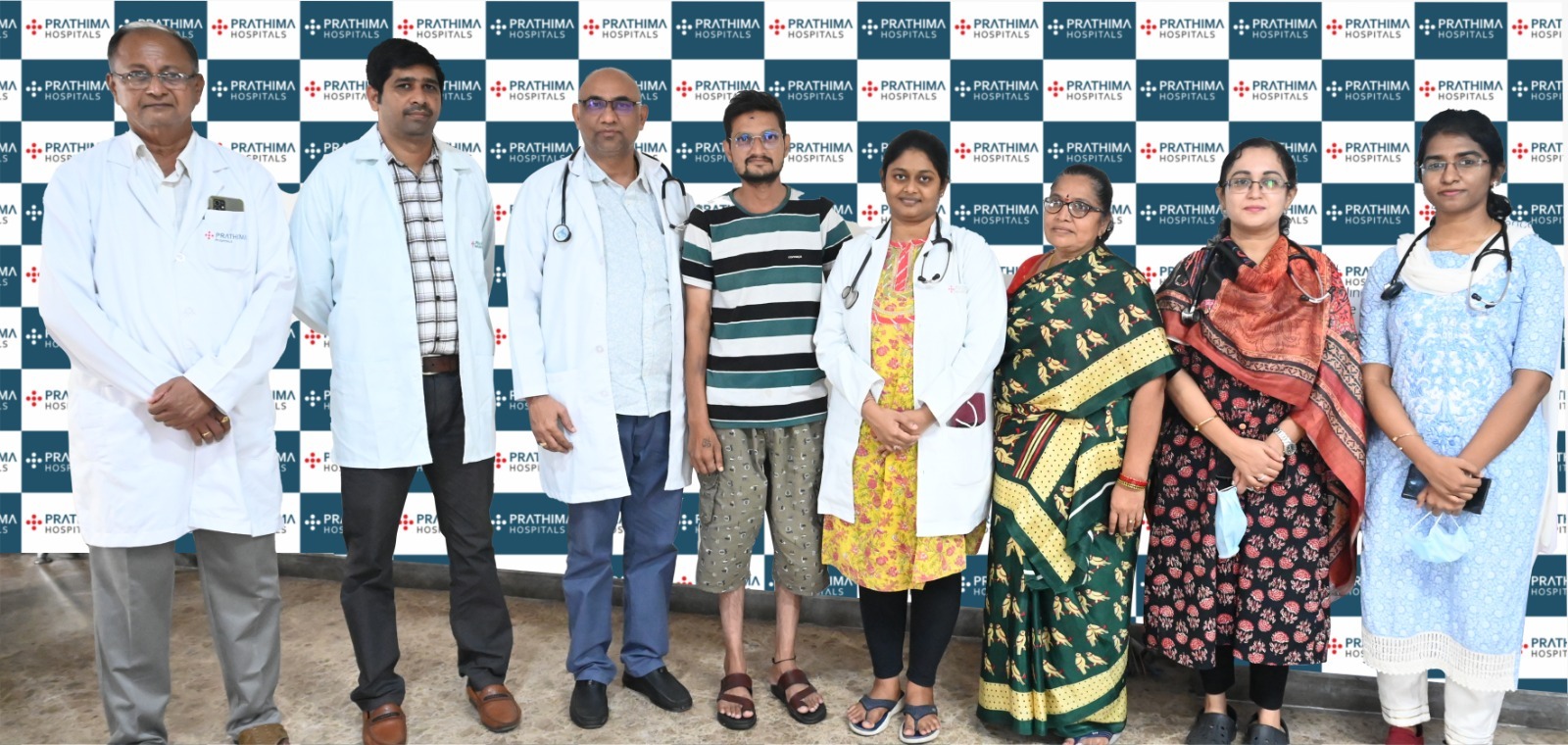Pediatric Respiratory Viral Infections

Pediatric Respiratory Infections
Introduction:
Respiratory viral infections are a common occurrence in children and can range from mild, self-limiting illnesses to severe, life-threatening conditions. According to the Best Pulmonologist in Hyderabad, these infections affect the upper and lower respiratory tracts and are primarily caused by various viruses, including influenza viruses, respiratory syncytial virus (RSV), adenoviruses, human metapneumovirus (HMPV), and coronaviruses, among others. In this article, we will explore the prevalence, symptoms, prevention, and management of respiratory viral infections in children.
Prevalence and Impact:
Respiratory viral infections are highly prevalent in children, especially during the winter months and early spring. The crowded environments in schools and daycares, coupled with immature immune systems, make children more susceptible to contracting these infections. According to the World Health Organization (WHO), respiratory infections account for a significant portion of childhood illnesses and are a leading cause of hospitalizations in young children worldwide.
The impact of respiratory viral infections on children can vary widely. In most cases, these infections result in mild symptoms, such as a runny nose, cough, fever, and sore throat. However, in vulnerable populations, such as infants, children with underlying health conditions, and those with compromised immune systems, these infections can lead to severe complications, including pneumonia, bronchiolitis, and respiratory failure.
Common Respiratory Viral Infections in Children:
- Influenza: Influenza, commonly known as the flu, is caused by influenza viruses. It presents with sudden onset fever, chills, muscle aches, headache, and respiratory symptoms. Influenza can lead to severe illness, especially in young children, and vaccination is recommended to reduce the risk of infection.
- Respiratory Syncytial Virus (RSV): RSV is a significant cause of respiratory infections in infants and young children. It can lead to bronchiolitis, characterized by wheezing and difficulty breathing. RSV infections are more common during the fall and winter months.
- Adenoviruses: Adenoviruses can cause a wide range of symptoms, including respiratory infections like croup, bronchitis, and pneumonia. They are highly contagious and can spread rapidly in schools and daycare settings.
- Human Metapneumovirus (HMPV): HMPV is a relatively recently discovered virus that causes symptoms similar to RSV. It can lead to lower respiratory tract infections and may cause severe illness in vulnerable populations.
- Coronaviruses: Coronaviruses can affect both adults and children, with COVID-19 being the most prominent example. While most children experience mild or asymptomatic cases, some can develop severe illness, and there is ongoing research to better understand the impact of COVID-19 on children.
Symptoms and Complications as suggested by the Best Pulmonologist in KPHB:
The symptoms of respiratory viral infections in children can be quite similar, making it challenging to differentiate between specific viruses without diagnostic testing. Common symptoms include:
- Cough: Children may develop a persistent dry or productive cough as a result of the viral infection. The cough may be accompanied by mucus production and can last for several days or even weeks, depending on the virus.
- Runny Nose and Nasal Congestion: Nasal congestion and discharge are typical symptoms of respiratory viral infections. The mucus may be clear at the beginning of the illness but can become thicker and discoloured as the infection progresses.
- Fever: Fever is a common sign of viral infections as the body’s immune system responds to the invasion of the virus. Children may experience an elevated body temperature, which can range from mild to high-grade fever, depending on the severity of the infection.
- Sore Throat: Infections affecting the upper respiratory tract, such as adenoviruses and some strains of coronaviruses, may cause a sore throat, making swallowing and eating uncomfortable for children.
- Headache and Muscle Aches: Some viral infections, like influenza, can lead to headaches and muscle aches, making the child feel tired and unwell.
- Sneezing: Sneezing is a common symptom, especially during the early stages of the infection, when the virus replicates in the upper respiratory tract.
- Wheezing: In some cases, particularly with respiratory syncytial virus (RSV) infections, children may develop wheezing, which is a high-pitched whistling sound heard when breathing.
- Breathing Difficulties: Severe cases of respiratory viral infections can lead to respiratory distress, rapid breathing, chest retractions, and difficulty breathing. These symptoms may indicate lower respiratory tract involvement, such as bronchiolitis or pneumonia.
- Loss of Appetite: Children with respiratory viral infections may experience a decreased appetite, as the symptoms and discomfort may affect their desire to eat.
- Fatigue: The body’s immune response to the viral infection can lead to fatigue and general weakness in children.
While most respiratory viral infections in children resolve on their own with supportive care, some may lead to complications, especially in vulnerable individuals. These complications may include:
- Pneumonia: Infections can progress to the lungs, causing inflammation and leading to pneumonia, a condition where the air sacs in the lungs fill with fluid and make breathing difficult.
- Bronchiolitis: Commonly caused by RSV, bronchiolitis is an inflammation of the small airways in the lungs, making breathing challenging, especially in infants.
- Asthma Exacerbation: Children with pre-existing asthma may experience worsening symptoms during respiratory viral infections.
- Otitis Media: Infections may spread to the middle ear, leading to painful ear infections (otitis media).
Prevention Strategies:
Preventing respiratory viral infections in children is crucial for maintaining their health and reducing the risk of complications. Below are details of prevention strategies given by the Best Pulmonologist in Kukatpally, to the parents, caregivers, and healthcare professionals to implement to protect children from respiratory viral infections:
Vaccination:
Vaccination is one of the most effective ways to prevent respiratory viral infections in children. Several vaccines target specific viruses, such as influenza (flu) and measles, mumps, and rubella (MMR). Additionally, there are vaccines targeting multiple strains of the flu virus that are recommended annually, especially for high-risk groups.
- Influenza Vaccine: The flu vaccine is recommended for all children aged 6 months and older, including healthy children and those with underlying health conditions. It helps prevent flu infections and reduces the severity of symptoms if infection occurs.
- MMR Vaccine: The MMR vaccine protects against measles, mumps, and rubella, all of which can cause respiratory symptoms and complications.
- Pneumococcal Vaccine: This vaccine protects against pneumococcal bacteria, which can cause pneumonia, meningitis, and ear infections.
- COVID-19 Vaccine: Depending on the prevailing situation, the COVID-19 vaccine may also be recommended for children to reduce the risk of infection and transmission.
Hand Hygiene:
Regular handwashing is a simple yet effective way to prevent the spread of respiratory viruses. Teach children to wash their hands frequently using soap and water for at least 20 seconds, especially:
- After coughing, sneezing, or blowing their nose.
- After being in public places or touching frequently-touched surfaces.
- Before eating or handling food.
In situations where soap and water are not accessible, utilizing an alcohol-based hand sanitiser with a minimum alcohol content of 60% can serve as an alternative.
Avoiding Close Contact:
Encourage children to avoid close contact with individuals who are sick, especially those displaying symptoms of respiratory infections. This includes avoiding hugs, handshakes, and sharing personal items with others when someone is sick.
During outbreaks of respiratory viral infections, consider limiting children’s exposure to crowded places or events with large gatherings.
Covering Coughs and Sneezes:
Encourage children to use a tissue or their elbow to cover their mouth and nose when coughing or sneezing. This helps prevent the spread of respiratory droplets containing viruses to others.
Discourage the habit of covering the mouth with your hands when coughing or sneezing, as it increases the risk of contaminating hands and surfaces.
Proper Disposal of Tissues:
Teach children to dispose of used tissues in the trash immediately after use and wash their hands afterwards. This helps prevent the spread of viruses found in respiratory secretions.
Cleaning and Disinfecting:
Regularly clean and disinfect frequently-touched surfaces and objects, such as doorknobs, light switches, electronic devices, toys, and countertops.
Use household disinfectants that are effective against viruses to ensure proper sanitization.
Encourage Healthy Habits:
Promote a healthy lifestyle for children, as a strong immune system can help them fight off infections. This includes:
- Encouraging regular physical activity and exercise.
- Ensuring they get sufficient sleep and rest.
- Providing a well-balanced diet with plenty of fruits, vegetables, and whole grains.
- Keeping them well-hydrated with water and other healthy beverages.
Stay Informed:
Stay informed about the latest recommendations and guidelines from the Best Pulmonologist in Kachiguda and public health authorities regarding respiratory viral infections. Public health agencies often provide updates during outbreaks or seasonal spikes in infections.
Management and Treatment:
Most respiratory viral infections in children can be managed with supportive care at home. Treatment focuses on alleviating symptoms and ensuring adequate hydration and rest. Over-the-counter medications, such as acetaminophen or ibuprofen, can be used to manage fever and discomfort, but parents should follow age-appropriate dosing guidelines.
Antibiotics are not effective against viral infections, and their overuse can contribute to antibiotic resistance. However, in some cases, bacterial infections may accompany viral infections, leading to more severe symptoms. If a secondary bacterial infection is suspected, a healthcare provider may prescribe antibiotics.
In severe cases, hospitalization may be necessary, especially if a child is experiencing significant respiratory distress, dehydration, or complications like pneumonia. In the hospital, supportive measures, such as oxygen therapy and intravenous fluids, may be provided as needed.
Conclusion:
Respiratory viral infections are common in children and can range from mild cold-like symptoms to severe illnesses. While most infections resolve on their own with supportive care, some may lead to complications, particularly in vulnerable populations. Preventive measures, such as vaccination, hand hygiene, and avoiding close contact with sick individuals, are essential in reducing the transmission and impact of these infections. Parents and caregivers should stay informed about the latest recommendations from healthcare professionals and public health authorities to safeguard the health and well-being of their children.
.
.
.
.
.
For more details:
📞:: 733 733 6600 | 040 4345 4345
🌐:: https://prathimahospitals.com/book-appointment/



